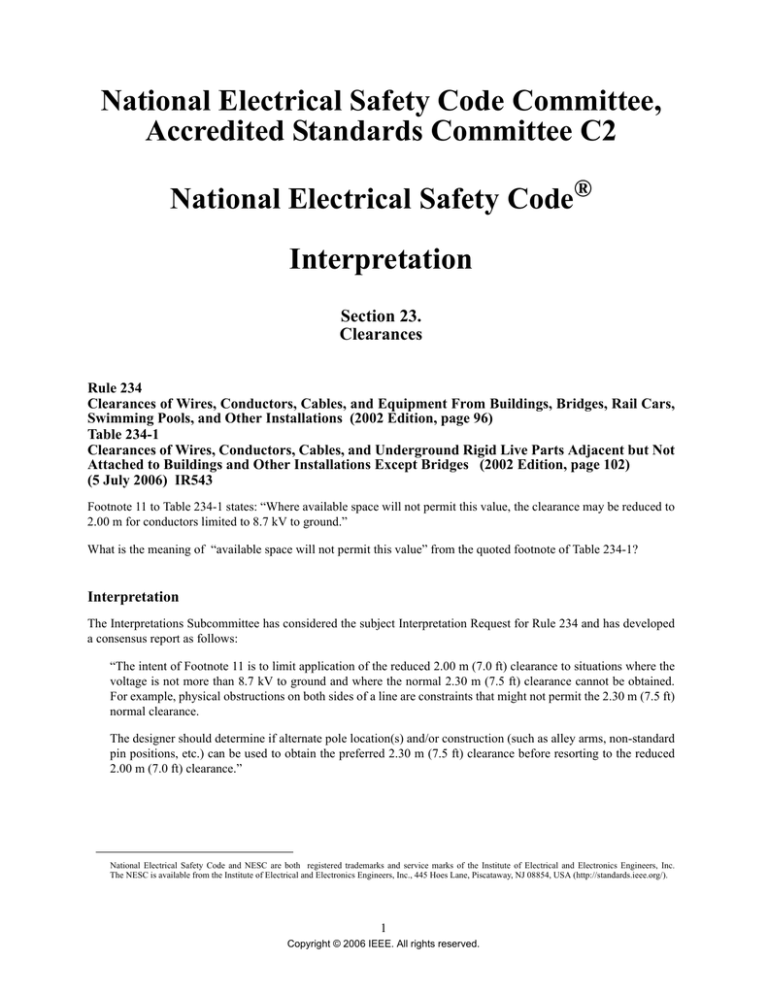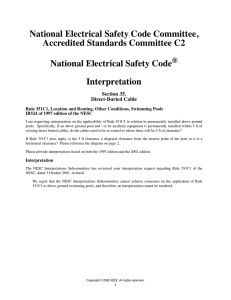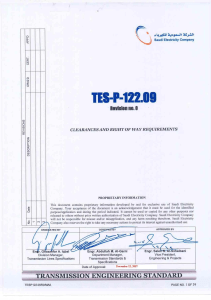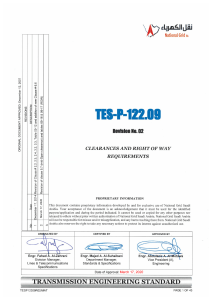
National Electrical Safety Code Committee,
Accredited Standards Committee C2
National Electrical Safety Code®
Interpretation
Section 23.
Clearances
Rule 234
Clearances of Wires, Conductors, Cables, and Equipment From Buildings, Bridges, Rail Cars,
Swimming Pools, and Other Installations (2002 Edition, page 96)
Table 234-1
Clearances of Wires, Conductors, Cables, and Underground Rigid Live Parts Adjacent but Not
Attached to Buildings and Other Installations Except Bridges (2002 Edition, page 102)
(5 July 2006) IR543
Footnote 11 to Table 234-1 states: “Where available space will not permit this value, the clearance may be reduced to
2.00 m for conductors limited to 8.7 kV to ground.”
What is the meaning of “available space will not permit this value” from the quoted footnote of Table 234-1?
Interpretation
The Interpretations Subcommittee has considered the subject Interpretation Request for Rule 234 and has developed
a consensus report as follows:
“The intent of Footnote 11 is to limit application of the reduced 2.00 m (7.0 ft) clearance to situations where the
voltage is not more than 8.7 kV to ground and where the normal 2.30 m (7.5 ft) clearance cannot be obtained.
For example, physical obstructions on both sides of a line are constraints that might not permit the 2.30 m (7.5 ft)
normal clearance.
The designer should determine if alternate pole location(s) and/or construction (such as alley arms, non-standard
pin positions, etc.) can be used to obtain the preferred 2.30 m (7.5 ft) clearance before resorting to the reduced
2.00 m (7.0 ft) clearance.”
National Electrical Safety Code and NESC are both registered trademarks and service marks of the Institute of Electrical and Electronics Engineers, Inc.
The NESC is available from the Institute of Electrical and Electronics Engineers, Inc., 445 Hoes Lane, Piscataway, NJ 08854, USA (http://standards.ieee.org/).
1
Copyright © 2006 IEEE. All rights reserved.







